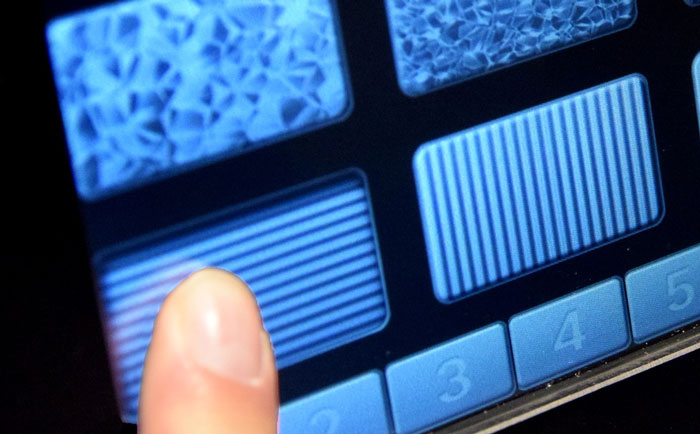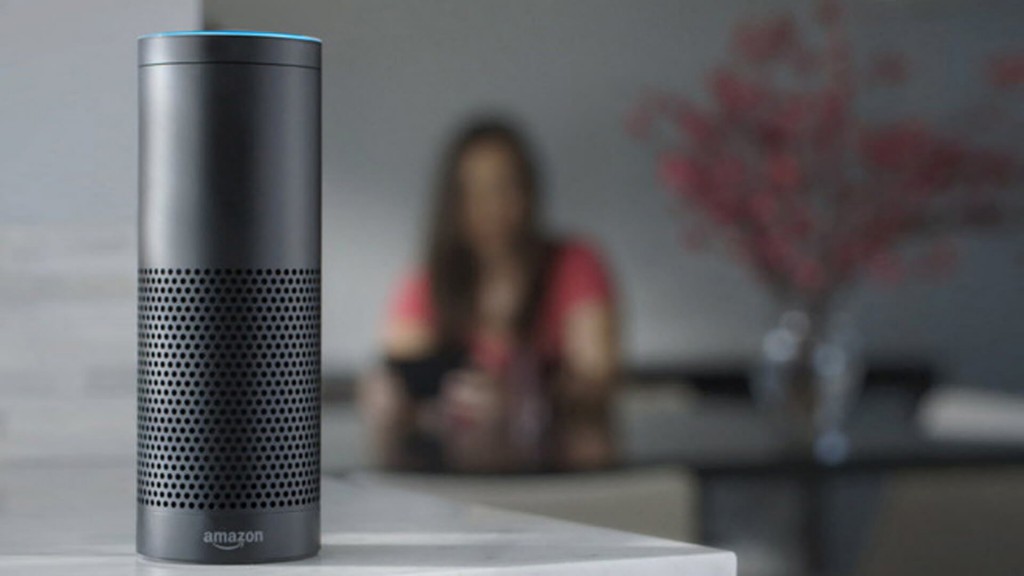At CES 2016 in Las Vegas last week, Mike Fletcher went in search of five technology trends that will have the biggest impact on global marketing and media during the year ahead.
1 – Robotics
 The robots invaded CES this year and, on the whole, they’re a friendly lot. The Robotics Marketplace grew 71% in exhibit space from 2015 and showcased 23 global firms creating intelligent, autonomous machines that are changing the way we live.
The robots invaded CES this year and, on the whole, they’re a friendly lot. The Robotics Marketplace grew 71% in exhibit space from 2015 and showcased 23 global firms creating intelligent, autonomous machines that are changing the way we live.
The fusion of robotics, AI and Cloud Computing forms the blueprint for a new breed of machine – the “learning” robot.
Examples from the CES show-floor included Patin, a learning mobility bot that can transport plant pots or lamps to areas of the home depending on the need for light, plus Avatarmind – a companion robot for children with autism or special needs which helps them to master behavioural skills through repetitiveness interactions.
Advertising service robots included Furo-D – a Human Robot Interaction device with an avatar face complete with various emotional expressions, voice and gesture recognition, a 32-inch haptic touch display, receipt printer, business card scanner and ultrasonic obstacle sensors.
2 – Haptic screens
‘Haptic’ is a word we’ll hear a lot in the year ahead as touchscreen technology in cars and retail evolves so that people can feel for commands without looking or triggering an immediate action.
Haptic feedback can replicate unique-feeling surfaces such as rough, smooth or even patterned, which is great news for sensory marketing campaigns or when you’re driving and you want to alter the complexities of your car’s new infotainment system without taking your eyes off the road.
Bosch was one of the brands to showcase haptic in-car screen technology at CES 2016. According to Bosch chairman Volkmar Denner: “Each year, 1.3 million people are killed in road accidents around the world. The evolution of haptic screen technology can save lives.”
3 – 360-Degree Content Experiences
It wasn’t that long ago that Facebook began supporting 360-degree video within people’s news feeds across the web, Android and iOS, thanks to Oculus Rift bringing its technology onto the social platform.
Now, VR headsets including Oculus are preparing to hit the shops and brands are wading in to experiment with immersive 360-degree virtual content, while media agencies are looking seriously at VR-ad formats.
At CES 2016, Oculus’s presence was huge (see above). Its two-storey stand comprised 11 ‘by appointment’ demo rooms while next door, another half dozen demo rooms catered for the over-demand to step inside these virtual worlds.
When Rift, along with competitor hardware including the HTC Vive and PlayStation VR get into the hands of consumers later this year, the floodgates for 360-degree content experiences will open. That’s great news for the hundreds of 360-degree camera suppliers who exhibited at CES this year, while brands will need to ensure that their content remains relevant and meaningful without appearing gimmicky for technology’s sake.
4 – Smarter Homes
Bosch’s Denner also predicted that 230 million households will be equipped with smart technology by 2020, while Ford’s CEO Mark Fields told CES delegates that by 2020 there is likely to be more than 50 billion internet-connected devices.
Haptic and transparent screen technology will form part of the smart home revolution along with sensors and cameras embedded into every home appliance so that your fridge reveals its contents without you having to open the door, and your front door opens without you having to find your keys.
At CES, Bosch announced a partnership with Philips to explore self-learning in-home lighting, while automotive marque Ford revealed a tie-up with Amazon Echo (above), which will allow car owners to use the Ford Sync 3 in-car system to open a garage door, check a thermostat setting or turn on home lighting or security with a vocal command.
With all this gadgetry, home security was also a major theme of this year’s show.
Among the exhibits, French firm Netatmo debuted a an outdoor security camera with ‘people, car, and animal detection.’ Germany-based Elgato and US-based Smanos also showcased new security systems, with cameras touting increased resolution and overall functionality, including in darkened rooms and at night.
5 – Autonomous car technology
No round-up of CES trends can avoid the tech race for driverless cars on our roads within the next decade.
Automotive supplier Delphi introduced the acronym V2E for ‘Vehicle to Everything’ communication. Its technology allows cars to communicate with smart home appliances, other cars, street signs, traffic lights and even pedestrian smartphones – alerting drivers to pedestrians who are using their phones while crossing the road ahead.
Dedicated Short Range Communication from Delphi already recognises the status of traffic lights so how long before outdoor advertising starts getting beamed direct to the dashboard or we’re followed by brand vehicles able to communicate promotional offers direct with our cars?










